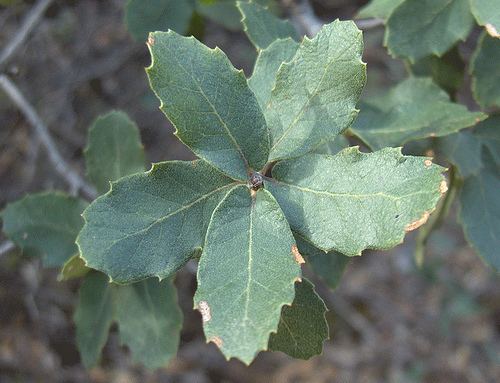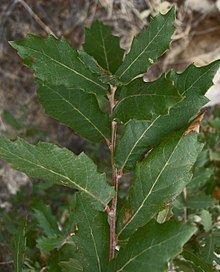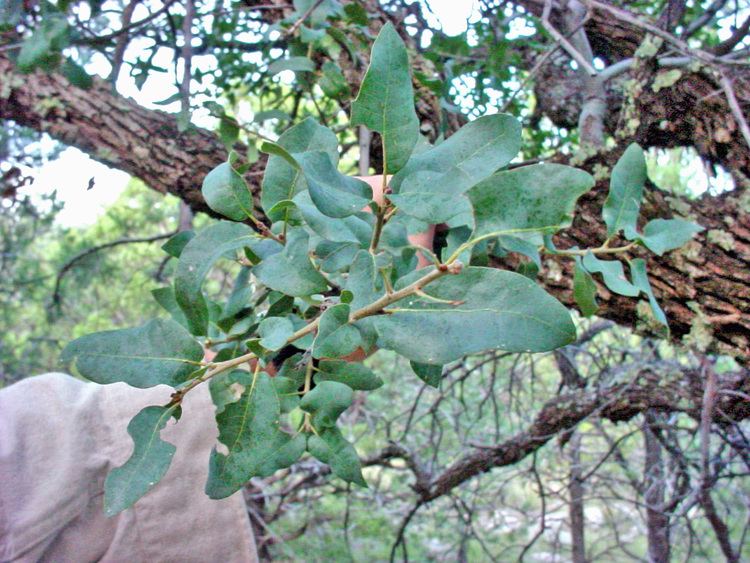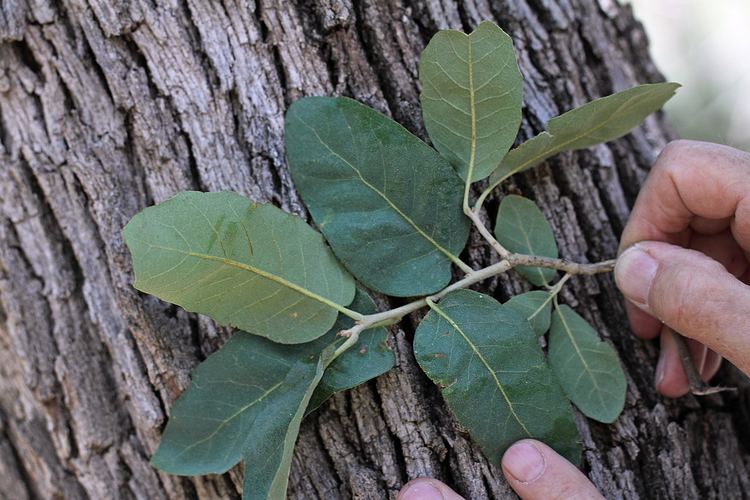Section Quercus Higher classification Oak | Genus Quercus Scientific name Quercus arizonica Rank Species | |
 | ||
Similar Oak, Quercus emoryi, Quercus hypoleucoides, Quercus oblongifolia, Quercus grisea | ||
Quercus arizonica, the Arizona white oak, is a North American tree species in the beech family. It is found in Arizona, New Mexico, western Texas, Sonora, Chihuahua, Coahuila, Sinaloa, and Durango.
Contents

Description

The Arizona white oak is one of the largest southwestern oaks. It is a perennial tree and may grow up to 60 ft (18 meters) with a trunk diameter of 3.3 ft (1 meter). It also contains fat branches and a spreading crown along with thick leaves. The thick leaves are about 3.2 inches (13 mm) long and evergreen. It grows very slowly once it has become mature, approximately 0.1 inches per year in diameter.

Cultivation

The Arizona white oak can be found in a vast array of habitats such as savannas, grasslands, and chaparrals. They are usually found in mountain like areas that are above about 1675 meters in elevation. Water use is low and it requires sun or part shade. Soil moisture must be dry and it must be rocky or sandy soils. Soils may be clay loam, clay, medium loam, or rocky. The Arizona white oak is both heat and cold tolerant.
Response to fires

When Arizona white oaks are small they usually die by fire. The acorns are usually killed by fires as well. The foliage is extremely flammable but larger trees usually survive fires that are not as severe and if a stump survives a fire it will sprout rapidly after its survival.
Threats
The wood decaying fungus Inonotus andersoni affects the Arizona white oak negatively. Burning and herbicide treatment has also affected the growth of the Arizona white oak, so they are being managed by pinyon-juniper silvicultural systems.
Uses
The wood is usually used for fuel. Since the wood of the Arizona white oak is hard, heavy, and strong, it is rarely used for commercial reasons such as furniture production.
The Arizona white oak is very important to livestock and wildlife because the acorns it produces provide food for cattle and other wildlife. It also provides cover for such animals like deer, turkeys, javelinas, desert sheep, songbirds, and quail. The white tailed deer is also known to utilize it for cover. For white-tailed and mule deer, the Arizona white oak is highly palatable as well.
The Arizona white oak can also be used as an ornamental plant.
